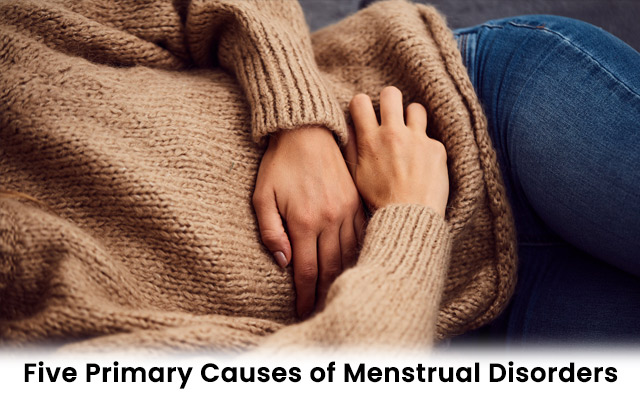Menstrual disorders are common issues faced by many women, affecting their quality of life and overall well-being. Understanding the menstrual disorder causes can help in identifying the underlying issues and seeking appropriate treatment. Below are five primary causes of menstrual disorders:
1. Hormonal Imbalances
Hormonal imbalances are one of the most common menstrual disorder causes. The menstrual cycle is regulated by hormones like estrogen and progesterone. Any imbalance in these hormones can lead to irregular periods, heavy bleeding, or even missed periods. Conditions like polycystic ovary syndrome (PCOS), thyroid disorders, and menopause are often linked to hormonal imbalances that can disrupt the menstrual cycle.
2. Stress and Anxiety
Stress and anxiety can have a significant impact on a woman’s menstrual cycle. The body’s response to stress can interfere with the hypothalamus, a part of the brain that regulates hormones. This disruption can lead to delayed, irregular, or even skipped periods. Chronic stress can exacerbate these issues, making it important to manage stress through relaxation techniques, exercise, or therapy.
3. Lifestyle Factors
Unhealthy lifestyle choices can also contribute to menstrual disorders. Factors such as poor diet, lack of exercise, and significant weight fluctuations can affect hormone levels and disrupt the menstrual cycle. For instance, being underweight or overweight can lead to irregular periods. Maintaining a balanced diet and regular exercise routine can help in managing menstrual health.
4. Uterine Fibroids and Polyps
Uterine fibroids and polyps are non-cancerous growths in the uterus that can cause heavy bleeding, painful periods, and irregular menstrual cycles. These growths can be a significant menstrual disorder cause and often require medical intervention, such as medication or surgery, to manage symptoms effectively.
5. Medical Conditions
Certain medical conditions, such as endometriosis, pelvic inflammatory disease (PID), and diabetes, can also lead to menstrual disorders. Endometriosis, where the tissue lining the uterus grows outside of it, can cause painful periods and heavy bleeding. PID, an infection of the reproductive organs, can lead to irregular periods and other complications. Managing these conditions with appropriate medical care is essential for maintaining a regular menstrual cycle.
Conclusion
Understanding the primary menstrual disorder causes is crucial for addressing and managing these issues effectively. Hormonal imbalances, stress, lifestyle factors, uterine fibroids, and certain medical conditions are among the top causes of menstrual disorders. Identifying these causes early and seeking appropriate treatment can help maintain menstrual health and overall well-being.
 8282867107
8282867107 sukhamoy83@gmail.com
sukhamoy83@gmail.com
